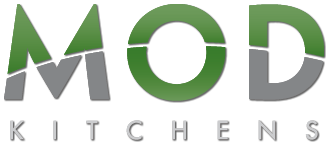Renovating a kitchen can be an exciting and rewarding experience. It is also a big undertaking, so it is important to plan ahead and understand the process. While each project is unique, this guide will provide you with a general overview of the steps involved in a kitchen renovation, from pulling permits to installing the final touches.
Pulling Permits
Before beginning any work on your kitchen renovation, permits must be obtained from your local municipality. Depending on the scope of your project, this could include building permits, electrical permits, plumbing permits, and HVAC permits. It is important to research what types of permits are required for your specific project and make sure they are obtained before starting any work. MOD assists with obtaining necessary permits and organizing inspections on behalf of our clients.
Demo and Framing
Once all necessary permits have been obtained, the MOD team can begin the demolition process. This involves removing existing fixtures such as cabinets and countertops as well as walls or other structural elements that may need to be modified or removed entirely. After demo has been completed, framing can begin which includes constructing new walls or making modifications to existing ones as needed for your project.
Electrical Work
The next step in a kitchen renovation is to have an electrician come in and install any new wiring that may be needed for additional outlets or lighting fixtures. This should be done before any drywall is installed so that all wiring is safely tucked away behind the walls.
Plumbing Work
After electrical work has been completed, it’s time for plumbing work to begin. This includes installing new pipes for sinks and dishwashers as well as hooking up existing pipes to newly installed appliances such as refrigerators or ovens. It’s important to make sure all plumbing connections are secure before moving onto the next step in the process.
HVAC Work
If you plan on adding ventilation systems such as range hoods or exhaust fans, then you will need an HVAC technician come in and install them properly according to local codes and regulations. They will also ensure that all ductwork is properly connected so that air can flow freely throughout your home without any obstructions or blockages.
Installing Final Touches
Once all major components of your kitchen renovation have been completed (electrical work, plumbing work, HVAC work), it’s time for the fun part – installing final touches! This includes installing cabinets and hardware, installing appliances (such as refrigerators and ovens), faucets, fixtures, toe kicks, etc, and ultimately countertops. You may also want to consider adding decorative elements such as tile backsplashes or accent lighting fixtures depending on your budget and preferences. Once everything has been installed correctly according to local codes and regulations, then you can finally enjoy your brand-new kitchen!

